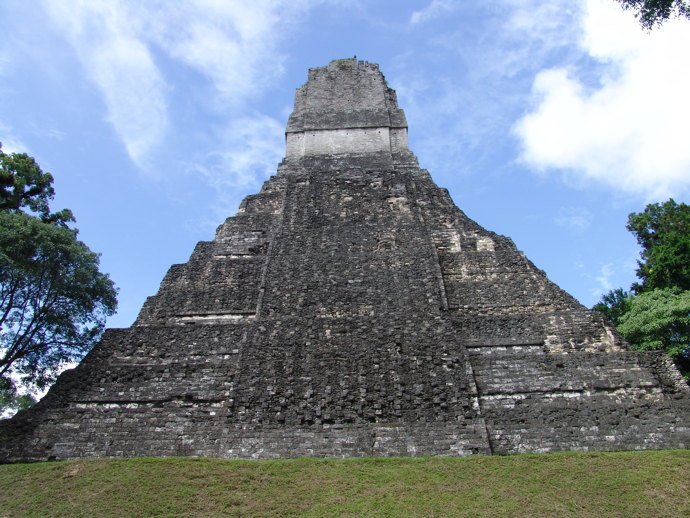Belize, Guatemala, Honduras and El Salvador treasure archaeological ruins where you can see vestiges of the ancient Mayan civilizations that inhabited Central America. We invite you to discover three of these impressive archaeological ruins.
Copan Ruins
If you are a lover of pre-Columbian cultures and archeology, the Copan Ruins in Honduras will fascinate you. They are one of the most important cultural destinations in Honduras and a perfect place to admire magnificent Mayan ruins. You can observe preserved ruins of the ancient Mayan empire and its splendor through palaces, pyramids, plazas, stelae and other monuments.
The site is composed by several architectural complexes, among them are the Great Plaza or Plaza of the Stelae, the Acropolis, the Ball Court, the Cemetery Complex, and the Burial Complex. One of its most popular attractions is the Plaza of the Hieroglyphic Stairway located in the Great Plaza, which has a monumental stairway whose steps has more than 1,250 individual glyphs. So far, it is the largest known Mayan inscription. It also highlights the ALTAR Q, a monument that represents 16 rulers in the dynastic succession of the city.
Copan has museums where you can admire pieces found during various research work on the site: the Museum of Sculpture, the Museum of Archaeology, which houses more than 3,000 pieces and fragments of temples and the Digital Museum of the Copan Ruins.

Tikal National Park
Tikal National Park in Guatemala is one of the most important archaeological sites of the ancient Mayan civilization. Located in the Department of Petén, in the north of Guatemala, it is the largest pre-Hispanic settlement in Guatemala. This impressive site, surrounded by an exuberant nature, surprises the visitor by the majesty of its architecture: stepped pyramids like the Temple of the Great Jaguar, carved monuments, ceremonial platforms, stelae and many more that reflect the splendor of this pre-Hispanic city.
The highest temple of the site, the Temple of the Two-headed Serpent, measures 70 meters from the ground and it is one of the tallest pre-Columbian structures on the continent. It was used to perform various ritual ceremonies. It also highlights the Pyramid of the Lost World, one of the most important structures of this complex and measures 30 meters high.
The site was declared a World Heritage Site by UNESCO in 1979, for its great importance for human heritage and natural history that offers those who admire the possibility to combine cultural and environmental attractions.

Lamanai
Belize's archeological wealth is significant, a vivid example of which is Lamanai. This archaeological site, whose name means Submerged Crocodile, is located in the Orange Walk district of Belize. The ruins of this site are located in the Orange Walk district and to access the site requires a boat trip down the river, which is a spectacular journey.
The visitor is fascinated by its architectural richness and impressive stone reliefs. Among its main buildings are the High Temple, the Temple of the Jaguar Masks and the Temple of the Masks.
It is a fascinating place, surrounded by a dense jungle, with the sound of howler monkeys in the background, the traveler enjoys one of the most amazing archaeological sites of Belize and a unique natural wealth.


